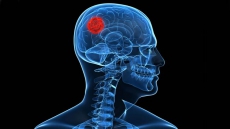In a first, engineers have designed a robotic walking stick for the visually impaired that can detect the user's immediate path and store localised geographical information.
The robotic cane has two cameras and Bluetooth audio functionality.
The cameras detect objects in the user's path, such as chairs and stairs, while the audio system communicates to the user.
Meanwhile, a computer holds information about recent pathways and objects within them.
"This allows the cane to recognise the user's location and guide the user, much as a seeing-eye-dog would do. Like a traditional cane, the robot cane is adjustable to different lengths," explained its designer Cang Ye from University of Arkansas at Little Rock - Engineering ERIQ Lab.
The technology has been prototyped under the National Robotics Initiative, funded by the US National Science Foundation and National Institutes of Health, Live Science reported.





